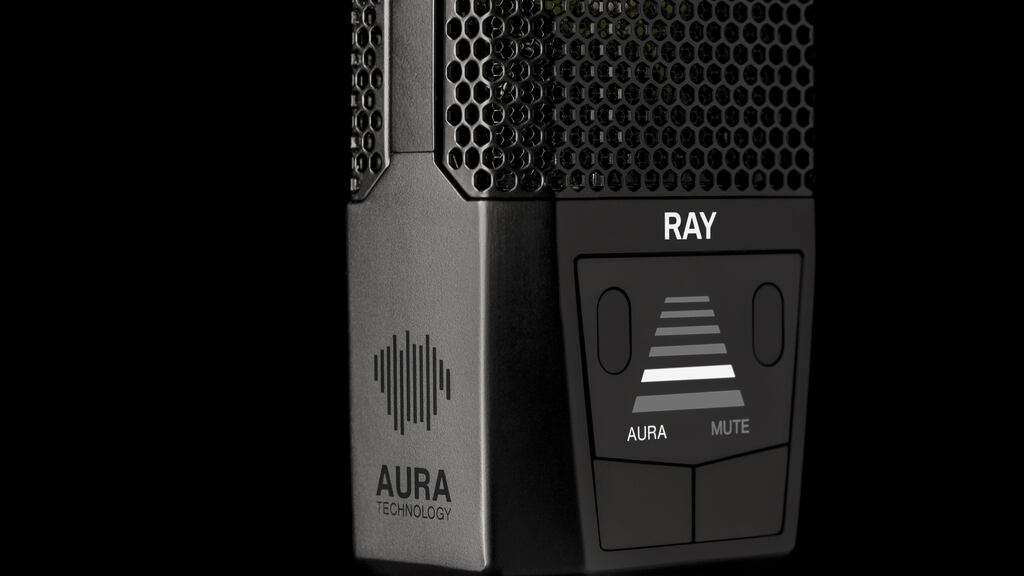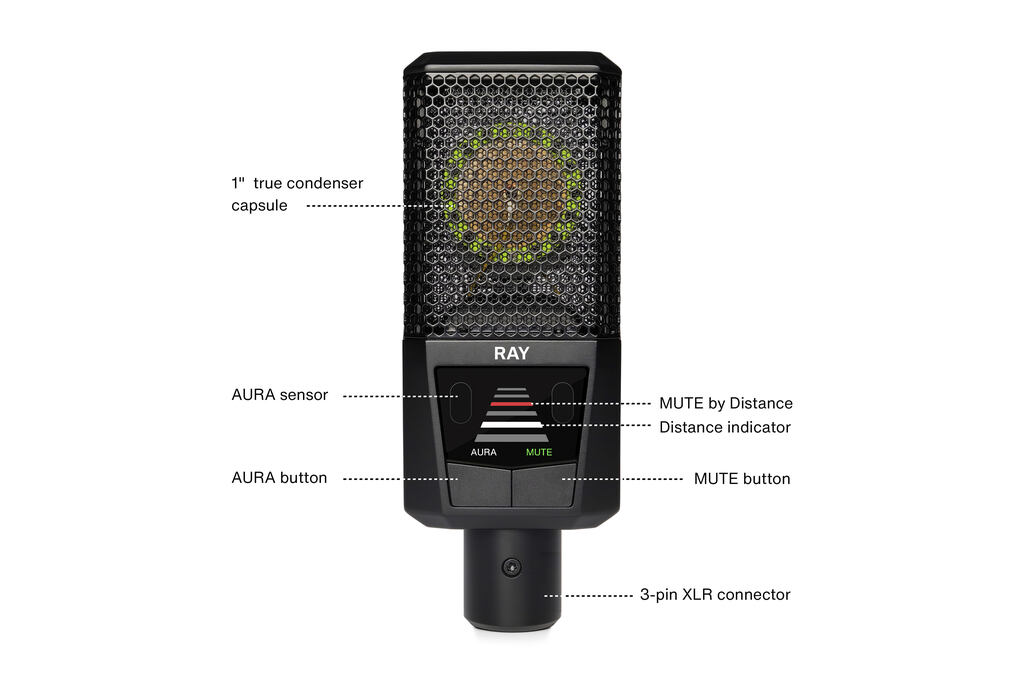
Blog
True love for great sound unites us.
Blog
True love for great sound unites us.
You probably heard about RAY, the first microphone with autofocus for your voice, and now you want to understand how the technology behind this groundbreaking new feature works.
In this blog post, we take a deeper look at our AURA Technology, its beginnings, and the nitty-gritty details.
The first microphone was invented about 150 years ago. Since then, all microphones have worked pretty much the same way. When you move away, your signal gets thin, and the levels drop. When you move closer, the levels increase. Directional microphones also have a proximity effect, which makes your voice sound boomy and bassy when you are very close.
The recording world has accepted that microphones work this way. Our vision at LEWITT is to make it as easy as possible for you to sound sensational. Therefore, we constantly strive to remove technical limitations with our products and look for new ways to improve the recording process.
Today, we are proud to introduce RAY, the first microphone with autofocus for your voice, using our sensor-based AURA Technology (patent pending). With AURA, you no longer need to stay at the same distance throughout your performance to get a balanced sound. You can move around more freely and focus on your art, while RAY and its AURA Technology will ensure that you still get great recordings.
The AURA working range is from 5 to 100 cm.
AURA uses a time-of-flight (ToF) sensor to measure your distance from the microphone. This information is used to adjust your tone and level to compensate for the change in distance.
AURA compensates for your signal's tonal changes with a filter that reacts dynamically according to distance. This process balances your signal sound and compensates for the proximity effect.
It also adjusts the volume to keep it consistent so you stay in focus when moving away from the microphone and don't distort your signal when you get very close.
These adjustments happen in real-time via a microcontroller that receives data digitally from the AURA sensor, but your audio signal stays 100% analog throughout.

The main challenge in creating the AURA technology was to make it work using only +48V phantom power. Creating a fantastic-sounding microphone is already a challenge. However, making these advanced functions work with minimal power was the most demanding part of the development process.
AURA Technology adjusts the settings of your RAY microphone according to the closest object detected. Imagine AURA as Autofocus on your camera. It will focus on your hand when you cover most of the lens.

To ensure RAY works consistently, try positioning it more centered and closer to you. It also helps to position the microphone at a higher position, pointing slightly down at your mouth. With this positioning, your head is the closest object to RAY, ensuring a great experience with AURA Technology and minimizing possible problems with hand gestures.
RAY adjusts the volume according to your distance to get the most consistent sound for your voice. The further you move away from the microphone, the louder the other sound sources will become. That's no problem in a quiet room. RAY's low self-noise helps to keep any unwanted signal as low as possible. However, if you are recording in a noisy environment or room, this could become a problem.
To optimize your recording quality, try to stay closer to your microphone and remove unwanted sound sources in the room (e.g., close the window, turn off the fan or air conditioning).
AURA enables another groundbreaking feature - MUTE by Distance.
Since the AURA sensor uses your distance information, you can use it to automatically mute your signal once a certain distance threshold is reached - MUTE by Distance.
Once you are beyond the threshold, AURA reduces your signal by -70 dB, and your signal is (practically) muted.
AURA always uses the nearest object or person as a reference and mutes or unmutes the microphone. It can't block out sound sources outside the threshold.
This feature is helpful for a variety of applications.
1. In a live stream, you may need to get up and do something unrelated. When MUTE by Distance is activated, you can be sure that the audience will not hear you.
2. In video meetings, it’s best to be audible only when you want to speak. The rest of the time, it’s beneficial to be muted. With MUTE by Distance, you can lean into the mic when you want to talk and be automatically muted when sitting comfortably at your desk and listening to other participants.
3. MUTE by Distance can also be helpful in a music recording environment. Let’s say you have a background singer. The singer can simply step up to the microphone to unmute, sing the parts, and step away to mute it again.